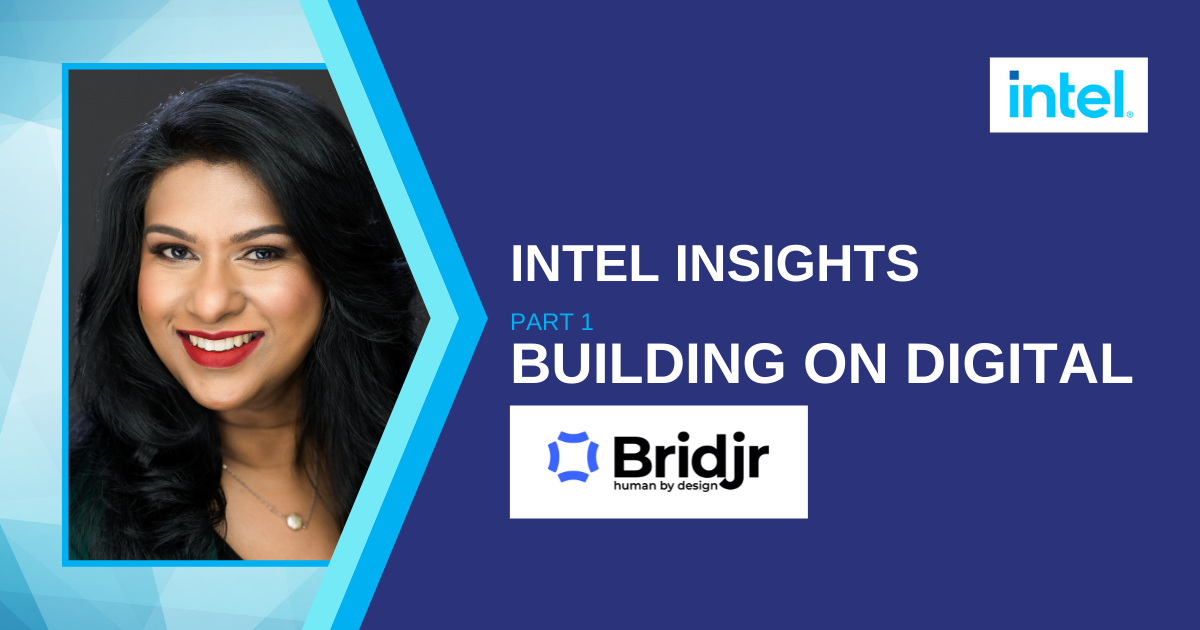Our collective journey from paper-based transactions to digital, omnichannel commerce has been marked by technology milestones as we remove friction, improve security and enhance the customer experience. And more importantly, our journey has been marked by human breakthroughs as we’ve learned to harness the power of trust, collaboration and co-creation.
Anita Ghosh, chief executive officer and founder at Bridjr, a transformation design and delivery consultancy, is focused on the human side of digital transformation. In her keynote address at MPC21, sponsored by Intel, Ghosh shared data from a new banking research study, emphasizing that innovation is about people and not just technology.
Survey findings show 70 percent of large transformational projects fail due to problems with execution or lack of confidence, Ghosh explained. Human centered innovations need to be grounded in deep consumer insights and backed by comprehensive planning and design.
Emotional commerce
Banks have done a phenomenal job of accelerating their digital roadmaps, but Ghosh suggested they could do more. It’s time to look beyond speed, convenience and ease of use to the deeper question of how to serve the emotional needs of their customers, she stated.
There was a huge opportunity to understand what customers needed during the pandemic, from a financial services perspective, Ghosh said, and as financial institutions modernize, they are experiencing gaps in talent and implementation. These challenges are best understood and approached from a human perspective, she explained.
Humans are physiologically and neurobiologically wired to be feeling creatures first, and yet many financial institutions approach customer issues in a rational problem-solving way at a time when humans are craving connection, Ghosh stated.
“In a world of accelerated adoption of digital capabilities, accelerated ecommerce, which I like to call emotional commerce, is what is needed in this world of hyper connectedness,” she said. “What people are actually really seeking is deeper connection.”
Internal Innovation
Ghosh pointed out that Human Centered Design is critical to agile product and service development because it gets to the heart of human-centered transformation. Banks have traditionally focused on sustaining innovation, by incrementally improving products and services. Fintechs, on the other hand, focus on disruptive innovation and that is where the market leaders are playing, she noted.
Disruptive innovation means doing something that feels counterintuitive, Ghosh stated, and participating organizations are willing to make mistakes as they evolve. Organizations that are not evolving run the risk of becoming irrelevant. This is our view on human centered transformation, she added and this is the formula that I call “II is greater than EI,” which means your internal innovation must be greater than your external innovation.
“If you wish to successfully transform, meaning drive results, get impact, embed capabilities, within your organization and drive relevance and growth, this requires a shift from CX as we’ve known the customer experience, to what we call CHX, the collective connected human experience.”
To view the replay of Anita Ghosh’s keynote address at MPC21, “Humanizing Financial Services Transformation: The Pathway to Making Value Real,” visit the MM&T YouTube Channel.
Part 2 of this Intel series, “Banking on Digital,” will take a deeper look at digital transformation in financial institutions.
[mkdf_separator class_name=”” type=”normal” position=”center” color=”” border_style=”” width=”” thickness=”” top_margin=”” bottom_margin=””]
WE ARE INTEL







